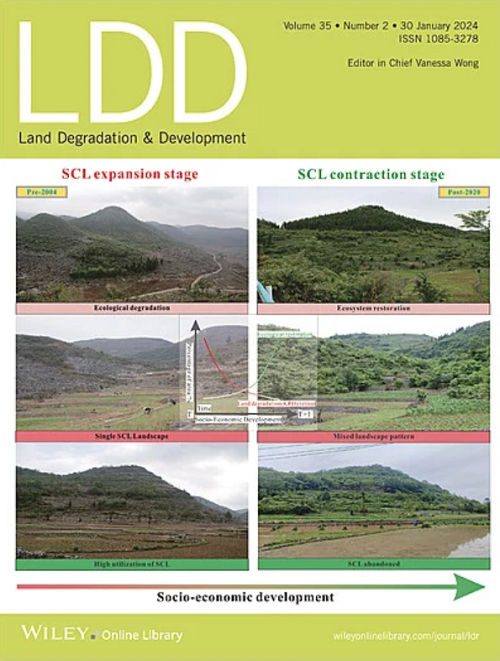Optimal Level of Straw Addition After the Autumn Harvest for Black Soil Aggregate Stability
IF 3.6
2区 农林科学
Q2 ENVIRONMENTAL SCIENCES
引用次数: 0
Abstract
In Northeast China, straw residues are integrated into fields to improve the soil structure and fertility after the autumn harvest. However, the optimal amount of straw addition is unclear. To determine whether an increase in straw addition is correlated with an increase in soil aggregate stability, the study focused on black cropland soil and was conducted through field incubation experiment (lasting 150 days) during seasonal freeze–thaw periods, implemented six different straw treatments: CK (0%), SA1 (1%, i.e., 10 g of straw per kg of soil), SA3 (3%), SA5 (5%), SA7 (7%), and SA9 (9%). The results revealed that under freeze–thaw conditions, aggregate stability significantly increased only when the straw addition amount was ≥ 5%. At this straw addition level, straw residues enhanced aggregate stability in two ways. First, the straw decomposition significantly increased SOC content, which serves as a binding substance for aggregates and promotes the formation of aggregates > 0.25 mm. Second, straw particles combined with soil particles to form straw-soil composite macro-aggregates that exhibited high water stability. However, aggregate stability was not positively correlated with the straw addition amount. This was because 5% straw addition was sufficient for the soil to reach carbon saturation, and the SOC content showed no significant change with further increasing straw addition. Moreover, excessive straw addition not only led to nitrogen limitation and slowed down the straw decomposition rate but also wasted straw resources. Therefore, 5% straw addition is optimal for improving soil aggregate stability. These findings provide a theoretical basis for how to improve the soil structure and fertility through the rational design of autumn straw return measures, thereby improving soil conditions for spring sowing and seedling emergence in Northeast China.求助全文
约1分钟内获得全文
求助全文
来源期刊

Land Degradation & Development
农林科学-环境科学
CiteScore
7.70
自引率
8.50%
发文量
379
审稿时长
5.5 months
期刊介绍:
Land Degradation & Development is an international journal which seeks to promote rational study of the recognition, monitoring, control and rehabilitation of degradation in terrestrial environments. The journal focuses on:
- what land degradation is;
- what causes land degradation;
- the impacts of land degradation
- the scale of land degradation;
- the history, current status or future trends of land degradation;
- avoidance, mitigation and control of land degradation;
- remedial actions to rehabilitate or restore degraded land;
- sustainable land management.
 求助内容:
求助内容: 应助结果提醒方式:
应助结果提醒方式:


